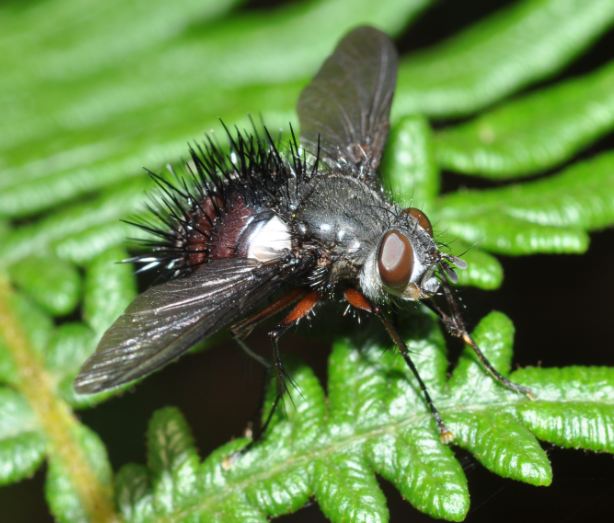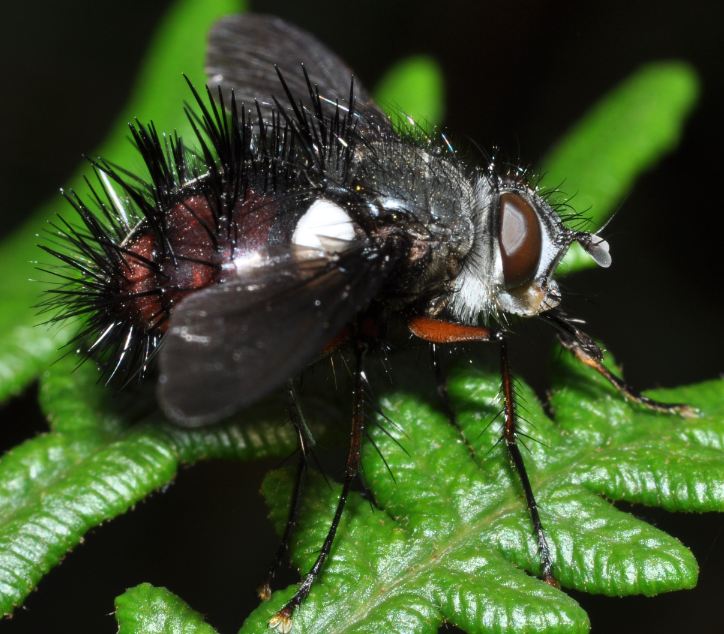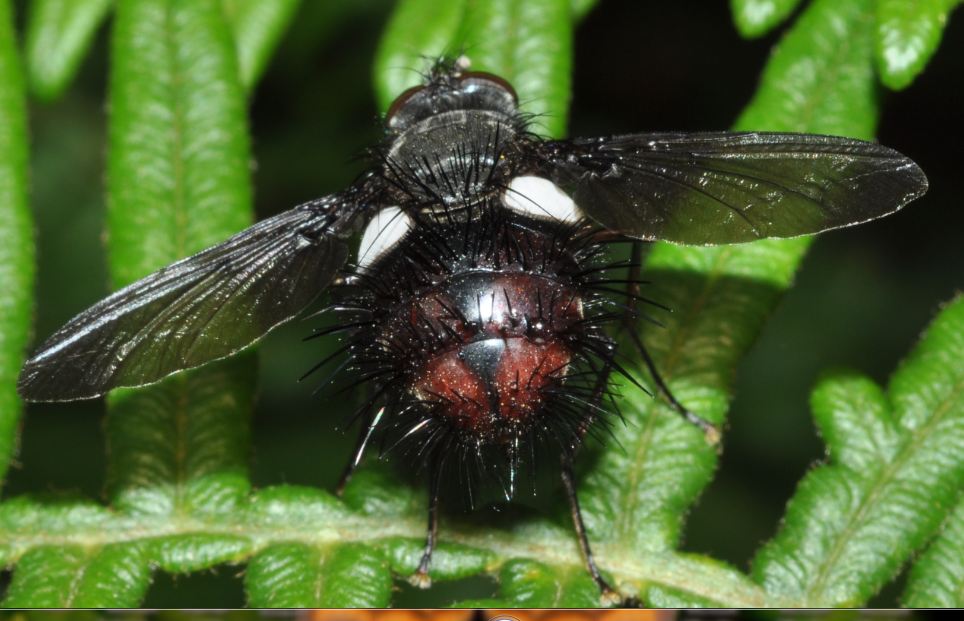Diptera.info :: Identification queries :: Diptera (adults)
Who is here? 1 guest(s)
|
Tachinid from Colombia for ID
|
|
| dguzman58 |
Posted on 13-07-2011 23:34
|
|
Member Location: Raleigh, NC USA Posts: 130 Joined: 06.07.11 |
Here is an image of a Large Tachinid from Parque Chicaque, Cundinamarca, Colombia, 2500 msn, in a open field of a cloud forest.
dguzman58 attached the following image:  [58.56Kb] |
|
|
|
| ChrisR |
Posted on 13-07-2011 23:43
|
|
Administrator Location: Reading, England Posts: 7699 Joined: 12.07.04 |
Beautiful  I can't think what it might be, from just that angle, but it is very interesting and would probably have been identifiable to genus with a specimen ... or at least close I can't think what it might be, from just that angle, but it is very interesting and would probably have been identifiable to genus with a specimen ... or at least close  Do you have any more angles - showing the bristle distributions? Do you have any more angles - showing the bristle distributions? Doesn't look like Tachinini (antennae wrong) ... so it points to something perhaps closer to Bombyliomyia but it isn't that either  The white calyptrae look incredible - but perhaps are just caused by the flash? The white calyptrae look incredible - but perhaps are just caused by the flash?
Edited by ChrisR on 13-07-2011 23:45 Manager of the UK Species Inventory in the Angela Marmont Centre for UK Biodiversity at the Natural History Museum, London. |
| dguzman58 |
Posted on 14-07-2011 06:00
|
|
Member Location: Raleigh, NC USA Posts: 130 Joined: 06.07.11 |
another view...
dguzman58 attached the following image:  [84.68Kb] |
|
|
|
| dguzman58 |
Posted on 14-07-2011 06:01
|
|
Member Location: Raleigh, NC USA Posts: 130 Joined: 06.07.11 |
another view...
dguzman58 attached the following image:  [92.55Kb] |
|
|
|
| ChrisR |
Posted on 14-07-2011 09:56
|
|
Administrator Location: Reading, England Posts: 7699 Joined: 12.07.04 |
Absolutely stunning! I have never seen anything quite like it though so I can't comment without running it through a key. There are a lot of genera that look similar to this (eg. Hystricia) but I have a feeling that it might be somewhere in the Polideini ... but that really is a guess. Monty Wood (the best in the world on neotropical tachinids) might be interested to see it but I know he is a very busy man and photo identifications are not his favourite job 
Manager of the UK Species Inventory in the Angela Marmont Centre for UK Biodiversity at the Natural History Museum, London. |
| sd |
Posted on 14-07-2011 12:31
|
|
Member Location: Suffolk, UK Posts: 892 Joined: 11.10.07 |
Wow, the calyptrae are really white. I'm just guessing, but with the inflated body, rigid proboscis and no palps, might it be Epalpus? I can sort of key it through Monty's key in MCAD, (with low degree of confidence) Steve |
|
|
|
| ChrisR |
Posted on 14-07-2011 13:15
|
|
Administrator Location: Reading, England Posts: 7699 Joined: 12.07.04 |
Sorry, I don't think that it is Epalpus  I can't see palps but that doesn't preclude the fact that they might just be very small and hidden in the shadows caused by the flash - and there are other genera without palps. Also Epalpus have a slightly different look to them and a slightly different shape to the antennae. I can't see palps but that doesn't preclude the fact that they might just be very small and hidden in the shadows caused by the flash - and there are other genera without palps. Also Epalpus have a slightly different look to them and a slightly different shape to the antennae.Also you have to remember that, although Colombia is quite close to Central America, I think these photos were taken closer to Amazonas region, in the south. Monty Wood once suggested that if the ratio of tree species between Costa Rica and Colombia is about 2000:10000 ... and there are about 2000 known species of tachinid in Costa Rica ... then it might be logical to expect 10000 species in Colombia. That's a bit 'back of an envelope' and not very scientific but it's still quite a scary thought 
Edited by ChrisR on 14-07-2011 13:19 Manager of the UK Species Inventory in the Angela Marmont Centre for UK Biodiversity at the Natural History Museum, London. |
| jorgemotalmeida |
Posted on 14-07-2011 14:23
|
|
Member Location: Viseu - PORTUGAL Posts: 9295 Joined: 05.06.06 |
I must say that those snow-colour calypters are something! I thought it was a result of the flash. Hope to see more flies from Colombia. |
| Jump to Forum: |














